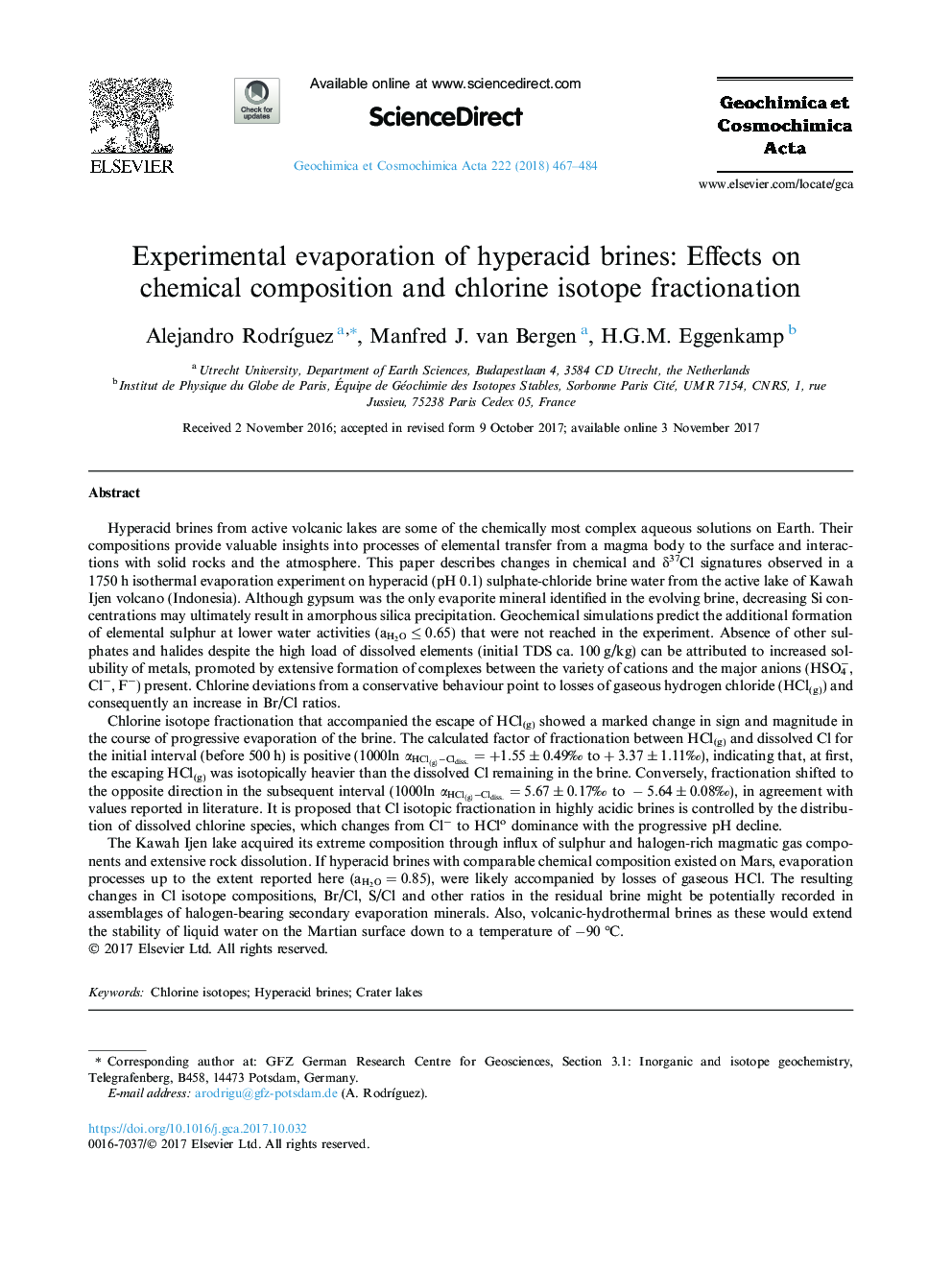| Article ID | Journal | Published Year | Pages | File Type |
|---|---|---|---|---|
| 8910961 | Geochimica et Cosmochimica Acta | 2018 | 18 Pages |
Abstract
The Kawah Ijen lake acquired its extreme composition through influx of sulphur and halogen-rich magmatic gas components and extensive rock dissolution. If hyperacid brines with comparable chemical composition existed on Mars, evaporation processes up to the extent reported here (aH2O=0.85), were likely accompanied by losses of gaseous HCl. The resulting changes in Cl isotope compositions, Br/Cl, S/Cl and other ratios in the residual brine might be potentially recorded in assemblages of halogen-bearing secondary evaporation minerals. Also, volcanic-hydrothermal brines as these would extend the stability of liquid water on the Martian surface down to a temperature of â90â¯Â°C.
Keywords
Related Topics
Physical Sciences and Engineering
Earth and Planetary Sciences
Geochemistry and Petrology
Authors
Alejandro RodrÃguez, Manfred J. van Bergen, H.G.M. Eggenkamp,
